I have used several Nikon D90 cameras at various times. In whatever conditions they were not: I constantly carried cameras with me in hikes, reinstalled lenses millions of times, in the rain, in the cold and on hot days - but the cameras worked like clockwork. Of course, I understand that good copies of Nikon D90 may have come across, but still, many years of trouble-free operation and mileage of over 130.000 (one hundred thirty thousand) of one copy and over 250.000 (a quarter of a million) of the second copy only gives rise to positive reviews.
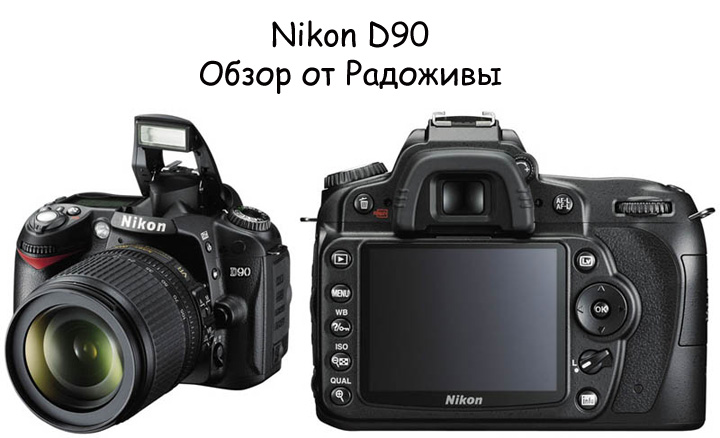
Review of the Nikon D90. View of the camera itself.
To fully understand and understand the camera, you just need read the instructionsIt’s long and boring, but I don’t see another way. The quality of the pictures very much depends on the lens and the methodology of your shooting, as well as image control mode, therefore, to say that the camera shoots better or worse is blasphemy, we can only talk about its ergonomics, technical characteristics and direct work experience. Always remember that important how to take pictures, but not by what means.
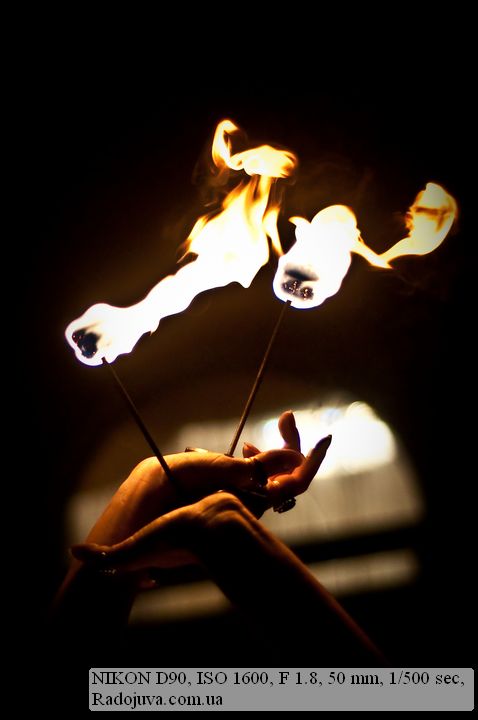
Sample photos on Nikon D90
And so, the camera belongs to the class of digital mirrors mid-range cameras... The Nikon D90 is often said to be an advanced amateur camera. Therefore, please note that this is not a professional camera, as they often write on the Internet (especially in online stores), professional cameras - is D300(s) D200, D700, D3(x, s), D4, D800(E) - therefore, you need to understand that the device is more aimed at amateurs than at professionals. The main feature of the camera is that the set of functions allows you to use the Nikon D90 just as well as professional technology, but with some limitations.
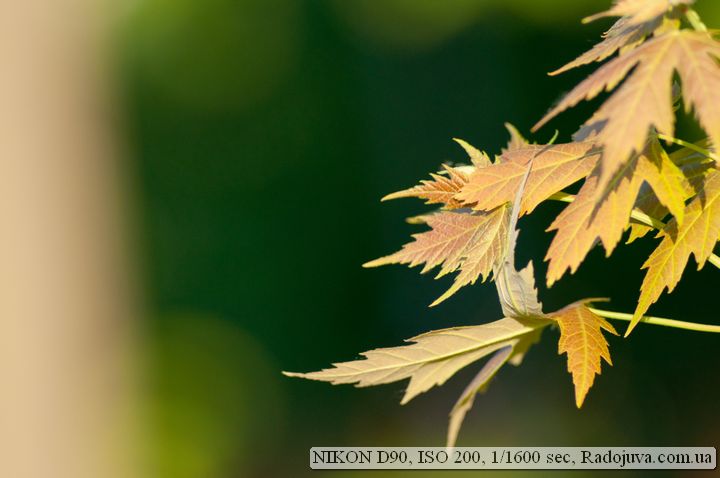
Sample photo on Nikon D90
The main parameters of Nikon D90, which are worth paying attention to
1. Live view
2. HD video 1280 * 720 24k \ s
3MP CMOS sensor
4. Aluminum-magnesium case with a bunch of buttons
5. Built-in autofocus drive
6. Additional screen
7. 4.5 frames \ second
8. Flash operating in Comand mode and FP mode
9. Lithium-ion battery
10. Matrix cleaning system
11. Bracketing exposure
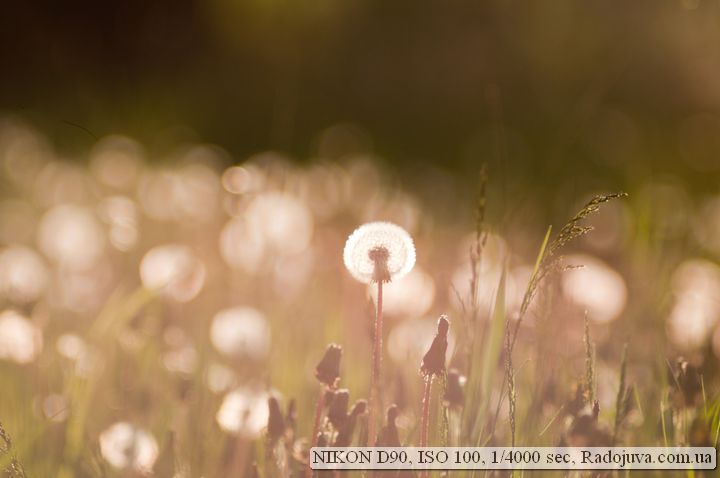
Example photo on Nikon D90
Now let's go through each item from a practical point of view.
1. Live View. Under live view it means “Live View” and in Nikon D90 it is quite a strong point.
First: made for the D90 very large screen (920.000 points - the same as in professional D3, D700) from which you can not tear yourself away. He even knows how to show slide shows to music!
Secondly: very convenient button to switch to live view - just clicked and the incomprehensible digital SLR turned into an ordinary soap box (useful for people who just switched to SLR cameras and just can't figure out what to see through the viewfinder).
Third: this mode allows clearly control focus at any point in your frame. Let’s take a closer look - when sighting you can select any area in the frame with the joystick and zoom it in on a scale of 1 to 1 - that is, select any point for focusing. This mode is indispensable when working with manual (non-autofocus lenses) and a tripod.
True, it takes time to get used to the work of the mirror, which adds unnecessary sounds and clinks when working. The mirror and shutter clicks when Live View is enabled, and when shooting, they click twice. It may seem that the camera is taking extra frames. A huge disadvantage of this mode is that autofocus works very, very slowly, and in video mode it does not work at all.
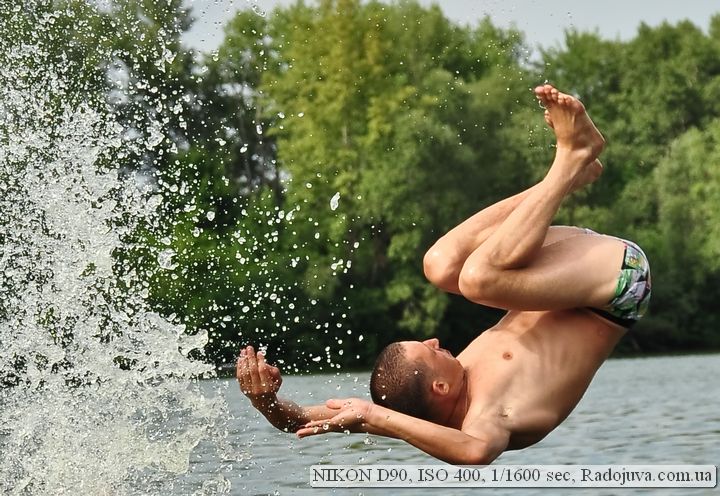
Photo on Nikon D90
2.HD video 1280 * 720 24k \ s without autofocus - absolutely unnecessary thing for a photographer
Why not necessary - because who will watch the video without autofocus? Okay, you can still take photos somehow in manual focus mode, but video with manual focus, when the scene changes at the speed of light, is a very difficult task. I recommend shooting video only with a tripod. A couple of times I shot a video with my hands - you can shoot, but again, it's very, very difficult. One more camera - Nikon D5000 - has video without autofocus.
The video itself is quite solid, in Motion JPEG format - which means that it “weighs” a lot. I advise you to immediately distill it into any of the popular formats after shooting - save a lot of disk space. Also, I advise you to block the exposure when shooting a video so that there are no tonal differences when changing the composition in the frame. Another serious problem with video is limiting the duration of the clip in 1280*720 up to 5 minutes. On the one hand, 5 minutes is quite enough to create short video selections, but I had to film my friend's performance once, and the 5 minute limit made the process very difficult. Also, after several 5-minute clips, the camera starts shooting clips up to 30 seconds long and turns off automatically, most likely due to the sensor overheating. The Nikon D90 is the first camera from Nikon with the ability to shoot video, so you shouldn't ask more of it. If you need a Nikon camera that shoots videos well and has automatic focus, then I advise you to look at the model Nikon D3100, Nikon D5100 и Nikon D7000.
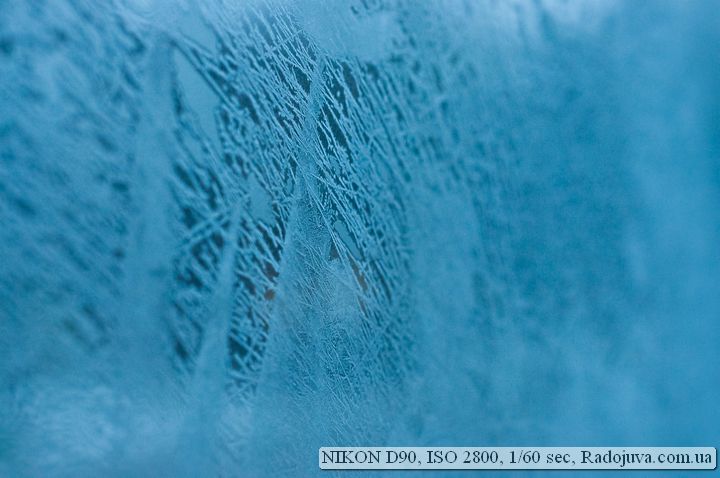
Photo on the Nikon D90. At high ISO.
3MP CMOS - just right
Why more? The more pixels - the higher the density and there may be more noise, due to the fact that the matrix cell is smaller and smaller - which means that it can catch less light. I advise you to read my article Battle of Megapixels.
The matrix is excellent. Of course, I already see noise at ISO 400, but at ISO 1600 they are still quite tolerant.
A very important point I noticed when working at high ISO, that the noise increases sharply after ISO 2500, that is, at ISO 2500 you can still squeeze something out, but then the quality of the photo drops dramatically. I recommend shooting at the proven ISO 200 and not raising ISO above 1600. ISO LO-1 (100) should be enabled only on a bright day, when you need to get some kind of portrait with an open aperture in order to keep within the shutter speed of 1 / 4000s. The values of ISO Hi1, Hi0.3, Hi0.7 are a kind of software wrapping of ISO, at such values it is practically impossible to get a low-noise picture.
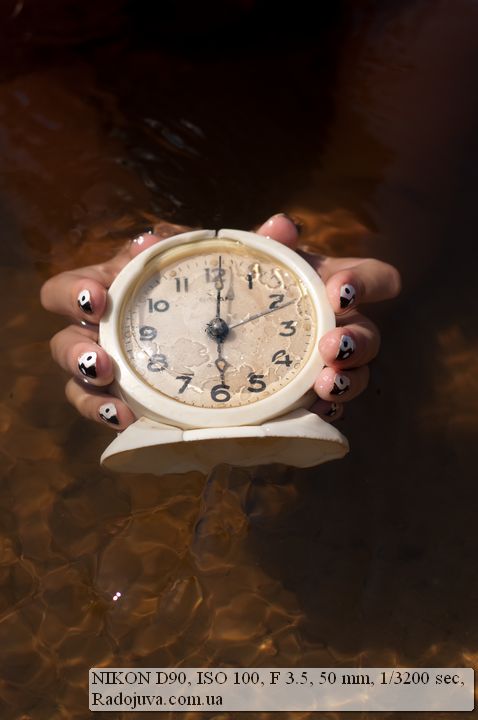
Sample photo on Nikon D90
4. Aluminum-magnesium housing (part)
In the introduction, I wrote that I constantly use, drag, ride with this camera and it feels quite adequately. Aluminum-magnesium alloy (although I did not find such information on the manufacturer’s website, but by weight, it’s not plastic) and one rubber insert, make the camera very practical, well-knocked down and provide excellent weight balance with different lenses. Perhaps for little hands it will be a little bit wrong, but for the serious hand of the photographer it’s just lovely.
On the body is a whole bunch of buttons. In the camera - the more the better. You can get quick access to all the basic functions and not scroll through the huge menu. I configured the programmable button to change the type of focus.
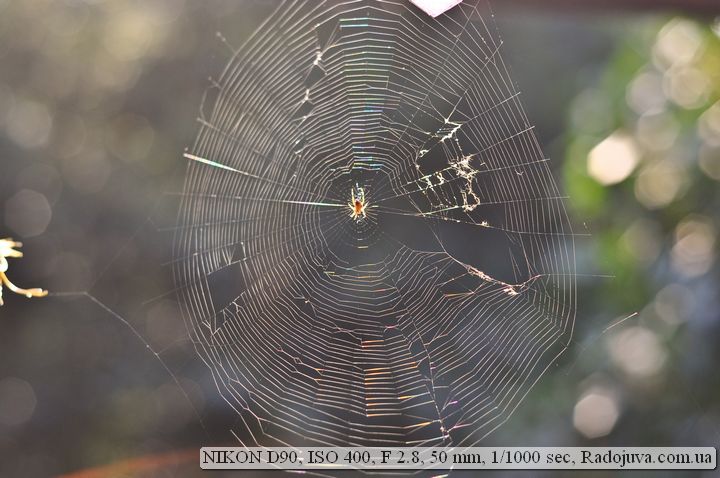
Wildlife Photo on Nikon D90
5. Built-in autofocus drive
A panacea for saving money and a panacea for professionals. The Nikon D90 camera has a built-in auto focus motor (screwdriver) for working with lenses marked AF. This allows you to use optics without a built-in focusing system (which means that you can use any autofocus lenses). Usually such optics are cheaper, for example, you can buy Nikon 50mm F1.8D AF for only $ 150 and feel like a real professional. Also, a huge portion of professional optics simply go without an auto focus motor. For example, there is simply no analogue for the Nikkor 135 DC with a built-in autofocus motor. More details about the compatibility of Nikon lenses in my article - Lens difference.
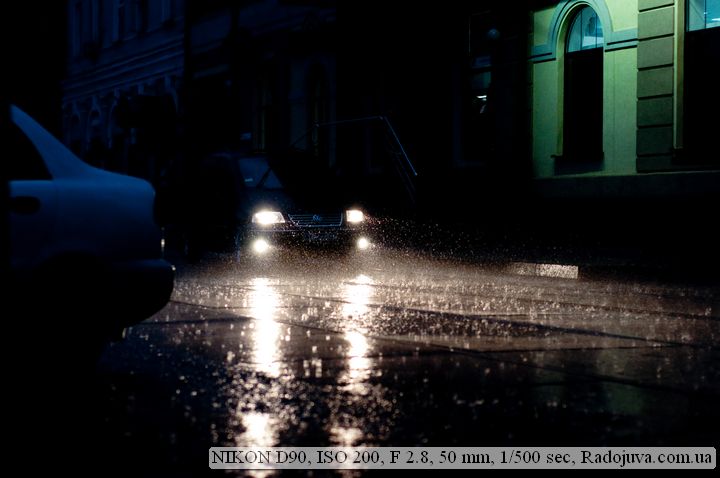
Photo on Nikon D90
6. Optional monochronous screen.
Recently I read on the Internet that the small monochrome display on the D90 is archaism, I was very surprised by this. In fact, it is not, the additional display is very good ergonomics and saves time, battery power, unnecessary movements. Let me explain - the display is always on top and you do not need to turn the camera upside down to look at the main display, secondly, it has a very high contrast in the sun (everything is visible), thirdly, it does not consume the battery (even the backlight mode of the additional screen uses a lot less charge than the main display). In general, the camera looks even more impressive with him. By the way - the backlight mode is turned on by turning the camera switch to the right. He himself then returns to its original position. Below is one of the most serious disadvantages associated with this lever.
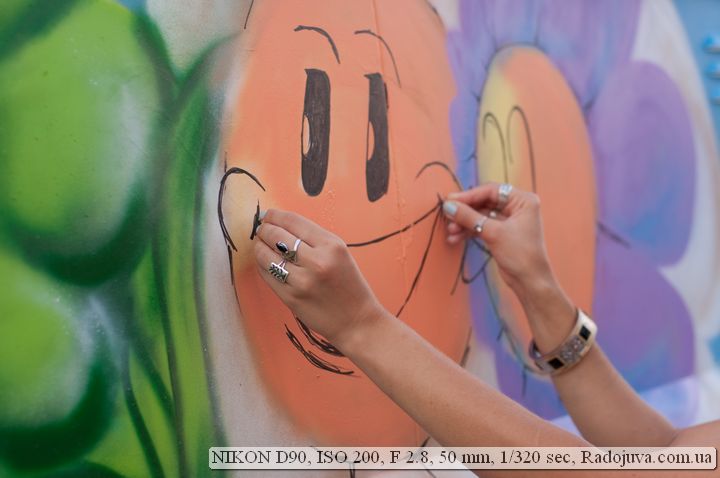
Photo on Nikon D90
7 - 4.5 frames / second
Someone can say, they say, stamps from Kenon are shot at 10 frames per second, the same D3 shoots 8 frames per second, but what can I say, D300 with a battery pack squeezes 8 frames per second. And now the question is - why do you need it? Burst shooting is very rare. 3 frames per second is already quite enough, the rest is only for specific tasks. Therefore, almost 5 frames per second is a pretty strong point. Conduct an experiment - at what speed can you press the camera button in the frame shooting mode? The same 5 times plus or minus will come out. In any case, the Nikon D90 has a higher rate of fire than the new, very expensive professional Nikon D800which can shoot at speeds up to 4 fps.
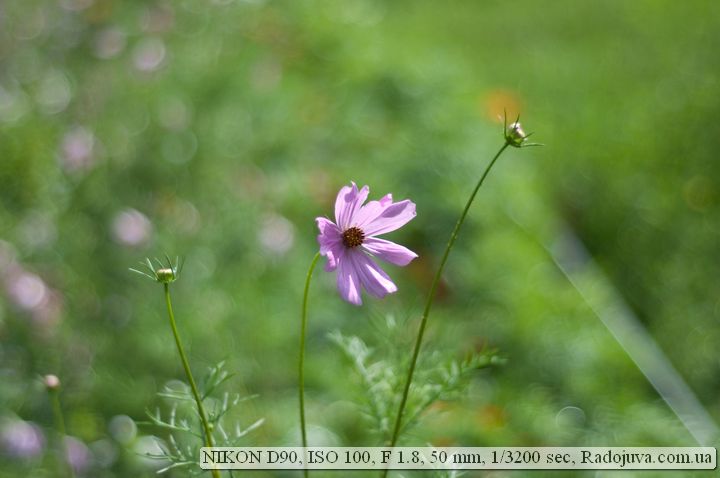
Sample photo on Nikon D90
8. Comand mode flash and FP support
Classics from Nikon. No need to buy expensive flash units or synchronizers - just go to the bracketing \ flash menu and select flash control mode C. Set the channel and group and control external flash units, such as SB-600, SB-700, SB-900, SB-800 и SB-910. Also do not forget that you can configure the built-in flash so that it gives only commands and does not take part in the shooting itself.
Then the most interesting - quick sync mode... With external flashes, you can set any shutter speed, up to 1/4000. Those who have not encountered such a problem will not understand; who knows, they will be glad. Few cameras support this mode. Why you need this, you can find, for example, in my article - 'flash in the afternoon '.
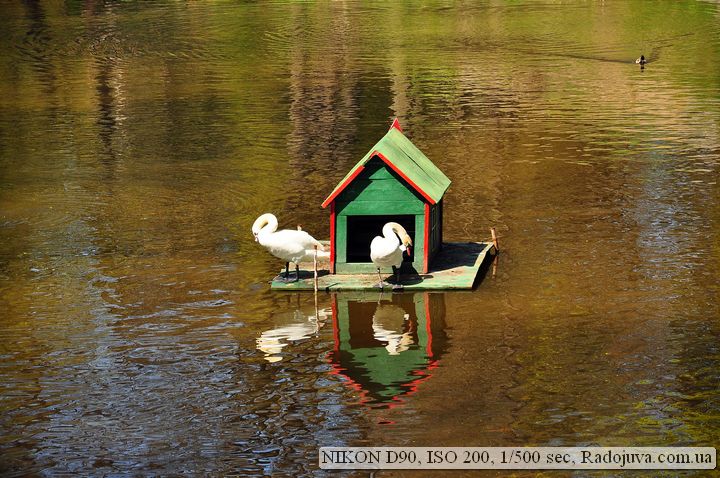
Sample photo on Nikon D90
9. Rechargeable Li-ion Battery EN-EL3e
Great armor-piercing battery. Also suitable for D700, D200, D300(s) etc. Withstands flash without over 2000 frames. The instructions say that it can provide work for 1200 shots, a third made with the flash - somewhere it is. The number of shots is greatly affected by the type of lens (e.g. VR mode), delay modes of the main display, etc.
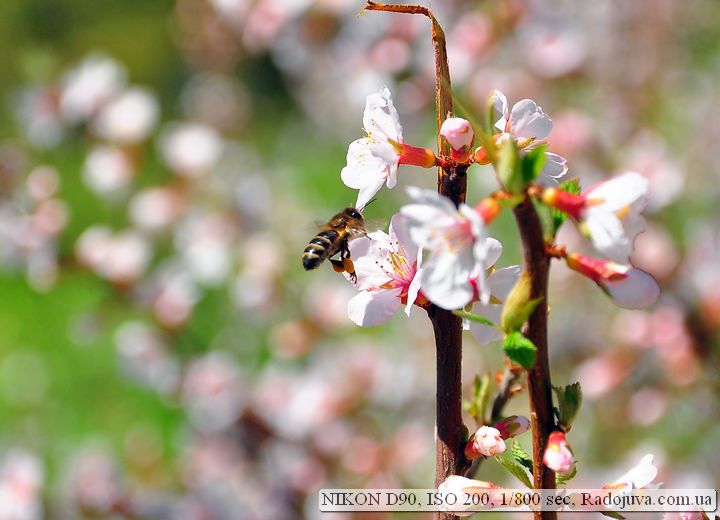
Sample photo on Nikon D90
10. Matrix cleaning system
A very useful thing. I recommend setting the cleaning when you turn off the camera, because when you turn it on, you often need to take pictures right away, and when you turn it off, let it clean for yourself. I advise you about cleaning the matrix read here.
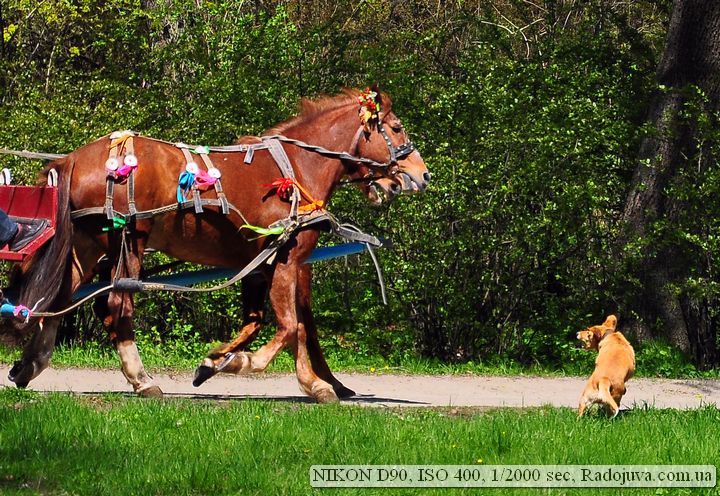
Sample photo on Nikon D90
11. Bracketing exposure
Bracketing allows you to shoot without fear for the correct exposure. True, this requires additional time, battery wear and fast filling of the memory card. It is under bracketing 4.5 frames per second are useful. I recommend not much use bracketing, it’s better to adjust the camera (especially the amendment exposure) and make one frame in RAW, and then, if anything, hold it out programmatically rather than slam the shutter on expo.
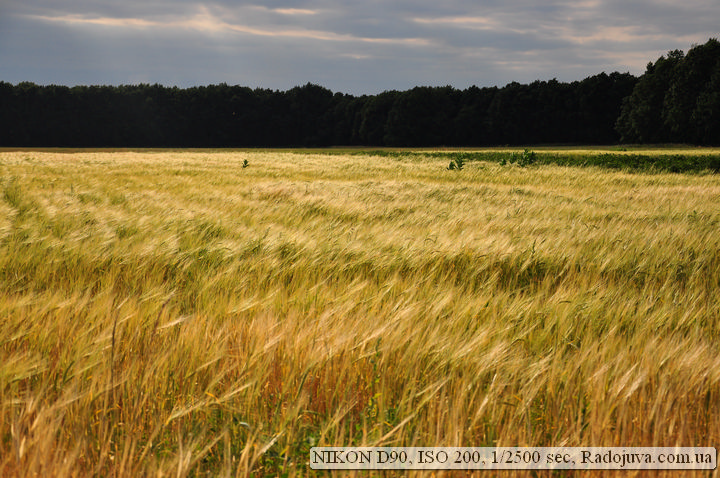
Nature photo on Nikon D90
I would like to note a number of huge advantages: wA wide range of functions to improve the picture - noise reduction functions, D-lighting etc.
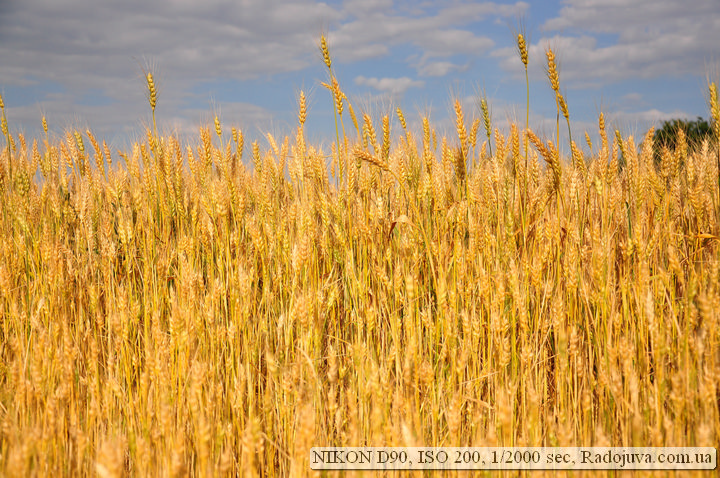
Nikon D90 photo
The disadvantages of the Nikon D90:
The strongest minus when working with the camera, I consider a strong return of the shutdown lever - that is, when you turn on the backlight of the additional screen, the lever moves back to the “ON” position, but its inertia is very strong and it goes further and turns off the camera (to the “OFF” position), therefore, you need to smoothly remove your finger after turning on the backlight of the additional screen. Very unpleasant stories are associated with this glitch, when at night, at important moments, the camera simply went out after setting the settings on the external display. Also, this switch is pretty loose, but it still works stably.
Also, after active work for a year, the rubber band, which is located to the right of the display, fell off, it expanded slightly and peeled off. I noticed that the rubber band covers the activity indicator of the memory card, that is, there is a fear of pushing the indicator deep into the camera and damaging it. The disease was treated by cutting off excess rubber and superglue. D90 got this disease from D200 and from D80. But, of course, I use my D90 camera a lot.
Exposure in 1/4000 second - if you haven’t understood yet, then when shooting with fast lenses starting with aperture of F / 1.8 and lower, you will miss the shutter speed, even at the lowest ISO.
Metering (exposure meter) does not work with non-chip lenses. It would be nothing, but this is just the camera and inferior to professional ones, such as D200 and older, almost any lens can be attached to them and the camera will operate in semi-automatic aperture priority mode or in good old manual mode. This really limits the operation of the camera with completely manual (without processor contacts) lenses, for example, Soviet ones - and you have to completely set all the settings “by eye”. Personally, I would very much like this function, since I am a fan of photographing with Soviet (and post-Soviet) optics.
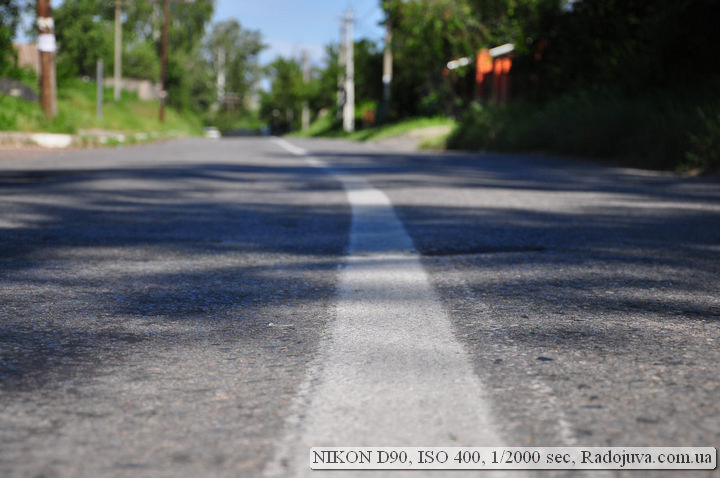
Photo on Nikon D90
For 3d tracking focus, there are not enough points (focus areas), and indeed, not enough focus points for such a solid camera.
No one wants depth of field view button imaged space. I use it very rarely, for example, in macro photography, but usually in 99% it is not needed. A funny thing that I advise you to check is to raise the flash and press the depth of field button (it’s located below, under the lens mount) and you will see that for a couple of seconds the flash works as a flashlight (using the strobe effect)
I consider one more unnecessary button \ property focus point lock button. It was useful to me only a couple of times, when I very strongly brought the camera to my face and accidentally pressed the joystick, thereby changing the focus point, in other cases, the point retains its position. It would be better instead of it to set the lever for changing the metering (as in older models), and so you have to press the top button near the external display and turn one of the selectors.
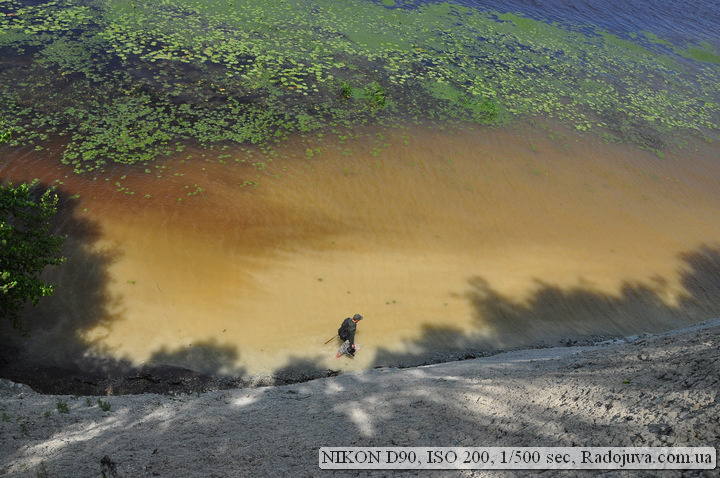
Photo at Nikon D90
Brief comparison with Nikon D80:
D90 is a descendant Nikon D80, which has an increased rate of fire, a different type of sensor (CMOS VS CCD), a central multi selector button is added, there is a Live View function and the ability to record video, and the display is also enlarged. Battery, menu navigation, ergonomics and other important functions remained the same. If you Nikon D80 I do not recommend upgrading the Nikon D90, as the main functions of the cameras are the same.
A brief comparison of Nikon 90 with D300, D300s:
D300, D300s Are professional cameras from Nikon, and the amateur D90 cannot compete with them. IN D300, D300s stronger body excerpt up to 1/8000, a professional camera control interface, high rate of fire and the ability to work with manual lenses, this is where the main differences end. I do not recommend overpaying for D300, D300s unless you have to shoot 1000 frames every day.
A brief comparison of Nikon 90 with D7000:
D7000 surpasses even the Nikon D300 in a number of parameters, D300s, and especially Nikon D90, because as an upgrade I recommend only Nikon D7000 or already ff Nikon D700, D600, D800.

Photo at Nikon D90
Fit in the Nikon D90 Camera I think control with infrared remote Nikon ML-L3It costs a penny, and gives a lot of opportunities.
Attention: The final result of the image in the photograph depends very much on a large number of factors and the camera does not play the first role in this quantity, therefore, when photographing, remember - important how to take pictures, and don't try hard to find the best camera.
Sample Photos
The photos in the gallery below were shot on a budget lens Yongnuo 35mm f / 2 (model YN35mm F2N for Nikon cameras) and shown without treatment. Part of the photos is the conversion of the source RAW files by the original Nikon ViewNX-i utility without any additional adjustments, the other part is the original on-camera JPEG.
Download source files in format JPEG can at this link (114 files in the '.JPG' format, 735 MB).
More examples of photos, as well as source files, can be found in the reviews:
- YONGNUO LENS YN50mm F1.4N E
- Nikon DX AF-S Nikkor 18-55mm 1: 3.5-5.6GII ED SWM Aspherical
- Nikon N AF-S Nikkor 58mm 1: 1.4G Nano Crystal Coat SWM Aspherical
- YONGNUO 50mm 1: 1.8 (YN50mm F1.8N)
- Tokina VCM-S AT-X PRO SD 70-200 F4 (IF) FX N / AIS
- Nikon AF Nikkor 28mm 1: 2.8 (MKI)
- Tokina AT-X 80-400mm 1: 4.5-5.6 (AT-X 840 AF-II)
- Nikon AF Nikkor 20mm 1: 2.8D
- Tamron PZD Di 28-300mm F / 3.5-6.3 Piezo Drive VC Model A010
- Nikon Zoom-NIKKOR 80-200mm 1: 4.5 (AI, MKII)
- SIGMA ZOOM 28-105mm D 1: 2.8-4 DG
- Nikon AF Nikkor 28-70mm 1: 3.5-4.5 (MKI)
- Sigma 135-400mm 1: 4.5-5.6 D APO
- Tokina SD 24-70 F2.8 (IF) FX AT-X PRO Aspherical
- Nikon AF Micro Nikkor 105mm 1: 2.8 (MKI)
- Tamron 16-300mm F / 3.5-6.3 Di II PZD VC Model B016
- Tokina 107 Fisheye 10-17mm F3.5-4.5 DX AT-X Internal Focus
- INDUSTRAR 22U-1 1: 3,5 F = 50mm P
- LOMO RO501-1 F = 100 1: 2
- Nikon ED AF Nikkor 80-200mm 1: 2.8 (MKI)
- LOMO RO500-1 F = 90 1: 2
- Tokina AT-X PRO AF 28-70mm 1: 2.6-2.8 (Tokina AT-X 270 AF PRO)
- Nikon Lens Series E Zoom 75-150mm 1: 3.5 (MKII)
- Sigma DC 17-70mm 1: 2.8-4.5 MACRO HSM
- Tokina AT-X PRO SD 11-20 F2.8 (IF) DX ASPHERICAL
- SIGMA ZOOM 55-200mm 1: 4-5.6 DC HSM
- TAIR-3 4,5 / 300A
- Nikon DX AF-S Nikkor 55-200mm 1: 4-5.6GII ED VR II
- QUANTARAY TECH-10 NF AF MULTI-COATED 1: 4-5.6 f = 75-300mm
- Nikon NIKKOR-SC Auto 1: 1.2 f = 55mm
- Sigma DC 18-50mm 1: 2.8 EX MACRO HSM
- Tamron AF Aspherical 28-80mm 1: 3.5-5.6 177D
- Quantaray 70-300mm 1: 4-5.6 D LDO MACRO for Nikon AF, MACRO (200-300)
- SIGMA ZOOM 28-200mmD 1: 3.8-5.6 UC Aspherical
- Quantaray 70-300mm 1: 4-5.6 D LDO MACRO for Nikon AF
- MC PANCOLAR 1,8 / 50 CARL ZEISS JENA DDR
- YONGNUO 40mm 1: 2.8 (YN40mm F2.8N)
- Sigma 70-300mm D 1: 4-5.6 APO DG
- TOKINA AF 70-210 1: 4-5.6
- Sigma 70-300mm 1: 4-5.6 D DL MACRO SUPER
- Quantaray for Nikon AF 28-300mm 1: 3.5-6.3 LDO Multi-Coated (28-300mmD Ashperical IF)
- SIGMA ZOOM 28-300mm 1: 3.5-6.3 DG MACRO
- YONGNUO LENS YN 14mm F 2.8 N
- Tamron AF Tele-Macro 70-210mm 1: 4-5.6 158DN
- I-26m-U 2,8 / 52
- Sigma Zoom DC 18-200mm 1: 3.5-6.3 II HSM OS
- Yongnuo YN 85mm F1.8N
- INDUSTRAR 22U-1 1: 3,5 F = 50mm P
- SIGMA ZOOM 18-50mm 1: 2.8 EX DC (D)
- Nikon IX-NIKKOR 60-180mm 1: 4-5.6
- YONGNUO LENS 100mm 1: 2 (YN100mm F2N, for Nikon)
- PROMASTER DIGITAL XR EDO AF Aspherical LD (IF) 18-200mm 1: 3.5-6.3 Macro
- Tamron Di II SP 17-50mm F / 2.8 VC
- MC HELIOS-44M-4 58mm 1: 2
- YONGNUO 35mm 1: 2 (YN35mm F2N)
- Sigma DC 17-70mm 1: 2.8-4.5
- Nikon ED AF-S Nikkor 300mm 1: 4D IF Silent Wave Motor
- Yongnuo YN60mm F2NE MF MACRO
Prices for modern Nikon cameras in popular stores can look at this link.
Video review, retrospective
Comments on this post do not require registration. Anyone can leave a comment. Many different photographic equipment can be found on AliExpress.
Conclusions:
In general, the Nikon D90 camera is simply lovely, a wide range of functions will allow both professional and amateur to work. The speed of work and the quality of the picture are very pleasing.
Material prepared Arkady Shapoval. Training/Consultations | Youtube | Facebook | Instagram | Twitter | Telegram





































Arkady, thanks for the review of the camera. Written by a practitioner, immediately visible.
He worked as a film. Now I decided to take a figure, I like the D90. I glance at the D7000.
Does it make sense to overpay 1,5 times for 7000? Your opinion is interesting.
If the budget allows - you need to take 7000. She is newer, faster and very strange that she was recorded as an amateur.
But if the budget does not allow, the D90 is also a great option, the only thing that I personally do not like about it is that it does not measure exposure with manual lenses.
Thanks for the answer, Arkady.
I try to take 7000. I found on the forums that the 7000 has a problem with the color rendering of the face tone, “brick and carrot”). Can these moments be resolved and how?
With uv. Yuri
Most likely these are the thoughts of maniacs of photographic equipment. It is unlikely that errors in the transmission of complexion will be noticeable when the correct BB is installed. The sharpness / contrast settings in the camera greatly affect the tone of the face, just like the color reproduction of the lens. If all parameters have not been indicated, then there is simply no point in believing in such statements. It is treated in any graphics editor.
Arkady, can you expect your review of the D7000?
The general outline is already there. There is no way to hold the apparatus for two days for the test. If there is equipment available for review, I will be glad.
Among the shortcomings, I would also note the not very well-made cover of the compartment for memory cards. For some reason, it is made as if you have to constantly get out and insert a memory card. I bought a photo bag in which the camera lies with the lens down, and coupled with a wrist strap, this leads to the fact that when I remove the camera from my bag, I constantly open this lid.
However, this carcass has much more advantages, the main of which I consider an excellent matrix for this price, a “screwdriver” and exposure bracketing (for those who want to expand the dynamic range of their images).
Is it possible to shoot on it right away in black and white? And how?
Yes you can. You need to select the MC (monochrome) mode in the camera settings. To do this, just press the INFO button two times, go to the image management and adjust the monochrome (black and white) to taste. Initially, there is SD mode (standard)
I climbed a bunch of forums and still decided to ask you a question)
Is it cost-effective to change nikon d3100 to d90?
cameras seem to be in slightly different categories, but in addition to agronomics and a screwdriver in the 90th, I did not notice any special differences with the D3100
thanks in advance)
At the moment, it is no longer profitable - since the D7000 came out, which has gone far from the D90. But if it were not for the D7000, the D90 still has fast synchronization with the flash, as well as the flash command mode - for me personally, irreplaceable things, since during the day you can easily add the required amount of light with a flash from the right side at any shutter speed supported by the camera. Also, the command mode gives a very quick opportunity to highlight an object for photo walks with my favorite SB-900 without any problems. But the D90 is already seriously inferior to the D7000 in fine-tuning the focus, working with manual optics, frames per second, etc. I think it's not worth changing the D3100 - as they usually write - it's better to buy a lens to your liking with the accumulated money. Thanks for the comments, all the best.
Here I am with a question.
I have long wanted to buy a digital mirror. Until now, I have been shooting (taking pictures) with a Nikon CoolPix 2100 digital camera (it has been on the shelf for about a year), Zenit TTL and Olympys IS-300 film SLRs. Film is now becoming an increasingly expensive pleasure :-(. In short! For more than a month I have been “suffering” with a choice. For me this will be the first digital SLR camera, - I don’t want to overpay and at the same time I don’t want to “regret” a little money and then bite myself elbows from it. Vibrated between Nikons D3100, D5100, D90. The first two do not have a screwdriver and the 90th is in the hand like a native. I looked in the store through the viewfinders of all three "chained" to the window. the viewfinder is very dark (maybe there was just a defective version in the window?) compared to the D90 and D3100 (like through a window) In general, what can you recommend? While your heart is in the D5100 + 90 / 50d, but maybe D1,8 + AF / S 3100 / 50G good option ?????
No matter how much you choose, you will sometimes have to regret all one thing. I personally advise you to get the Nikon D90 if you choose from these models. Regarding the viewfinder - most likely the D90 was without a battery, if there is no battery in it, the viewfinder fades three times (I don't know the reason). D90 + 50 1.8 is a great option.
Thanks! And then I almost decided on the 90th, but when I looked through the viewfinder,…. - new doubts began. The 3100 and 5100 also seemed to be without AB (they did not react when the camera switch was turned to the “ON” position) and in the viewfinder it was like daylight! :-)
Another question about D90. … .. I already decided to buy, - I called the store, - and…. They persistently began to dissuade me from buying D90 and Nikonov in general in particular. In favor of Canon of course :-). Excuse: Nikon has recently had a lot of defects, stupid (or rather practically absent) maintenance in Ukraine, lenses are more expensive than Canon lenses, often “loses” a lens, etc. etc. ... Maybe you have statistics of possible D90 breakdowns / malfunctions? Recommended Canon 550D for the same money (“much better”) :-)
.... There was also an argument that everything is complicated in the management of the D90. I downloaded the instruction from nET and if I understood correctly then to change the focus point, three or four movements of the thumb of the right hand are enough (unlock-move-lock). Those. no complications in this case. Or am I wrong? How do you, as an active user of D90? :-)….
PS regarding the "loss" of the lens, I read that this is not such a common problem and can be easily "cured" by wiping the contacts. To which the “consultant” laughed ... ..
On my Nikon D90, the loss of the lens was only two times in my life on the 18-105 lens, which I sold due to unnecessary.
Here is my personal experience for you, today I came from a photo shoot, unloaded RAW and 107.303 frames are hanging on the shutter counter, the device has been used for 2 years and works with a bang.
Regarding the choice of system - it's up to you, Nikon or Canon - each has its own pros and cons.
As for focusing on Nikon D90, I program a function key to select a focusing mode (auto, 3D tracking, one point at a time). And in order to switch the mode, I don't even need to move the camera away from my face - and I don't block the focus point, since I constantly need to change it, for this you just drive where you need to use the joystick, and if you also loop them, everything is very fast.
You wrote here:
1) ... With external flashes, you can set any shutter speed, up to 1/4000 ...
2) ... you can configure the built-in flash so that it gives only commands and does not take part in the shooting itself ...
You can learn more about these features. Where and what needs to be done, because I have already reclaimed everything - I cannot find it.
1) in order to work with shutter speeds lower than 1/200 (default), you need to enable FP high-speed sync mode (written in more detail here)
2) In the settings in the flash control menu, there are several operating modes for the built-in flash - TTL (auto), M (manual), C (command). You need to select the command mode, and in the submenu set the mode for the command flash to - (two dashes, no pulse), and at the same time, for the remote flash of group A or B, select the TTL mode and the desired channel. Then, on the external flash, select the Slave mode, set the same group and channel, and voila - when the shutter is released, the flashes will exchange data using the N CLS protocol and fire in automatic mode. The exact setting depends on the flash and camera model.
1) Found, thanks.
2) Probably it works adequately with native outbreaks. My Nissin Dir612 “reads” the transmitted force, but at the same time the on-camera also works (seen in the frame) :(. I tried all modes for it (M, TTL, -). Moreover, if I put - for the slave in channel A, then it does not works. Thanks!
It should work, but it will affect the exposed frame the least.
Evono, how ... I thought she only transmits a signal about the power, but itself at the moment of opening the curtains does not work ...
According to the idea, it does not work, the effect of the fact that it still gives extra light is visible mainly only indoors, in the open air it is not completely noticeable. Most likely it’s just the reflected / scattered light that hits, they did a little delay on the operation of the curtains. Although I can’t say for sure.
Clearly she. The shadow of the lens was visible, which only the built-in flash casts.
Thank you for the site. Honestly - informative, intelligible and without unnecessary things.
Essentially: there is a choice between the D80 and the D90, because I have a D3000 which is not enough for me, and I want more abruptly, but I can’t reach the D7000 for a long time. So, can 80 work with flashes in the same command mode as 90, or is it just the lot of the older camera?
Thanks you.
Yes, it may work. By and large, my D80 differs from the D90 only in the absence of live view and video.
Thank you very much for your review. The site added to favorites :) For a month now I have been using D90 with whale 18-105. While happy as an elephant. Before that, there was a Pentax k-m with whale 18-55 and 55-200 I have a question - what would you advise from inexpensive optics (including Soviet optics, including manual ones) - they are interested in both wide-angle and portrait, and also something with FR up to 300 for hunting :)? It's also interesting to hear your opinion on what kind of budget flash would you recommend to start with, so to speak.
For a wide angle, use your kit lens, this is the best option. Any Helios-44 is suitable for a portrait, the best option is Helios-81H with a native mount. From telephones, the excellent option is Jupiter-37A, Jupiter-21A. A budget flash is the SB-600 used. or Metz-48, Nissin I don't like.
I can also recommend a flash Nissin Di615 Mark2
excellent apparel for their pretty little money.
I had experience using Metz-48, as for me this one is better in terms of ergonomics (despite the lack of a screen) and a slightly better build.
Thanks for the quick reply :) And what about the Tele-n and Helios 81M (53mm)?
81m is the same 81n with the same bayonet mount. Tele-n will be difficult to find, and then difficult to exploit due to its heavy weight. If weight is not a problem, you can look at Tair-3.
Excellent description of the camera. From the "Nikon" company, one could attend to a present. I also use it (D90) for a long time .. I use lenses without electronics with might and main: I set the exposure according to the histogram when viewing the frame. That is, in the manual mode, the first shot is exposed approximately, then the histogram wrinkles, and the exposure is adjusted according to it. More than two "sightings" are not necessary, as a rule. Of course, not a machine gun, but if you shoot in RAW (and who is in the way?) - then the shooting is very fast, and there will be no mistakes.
By the way, my D90 after two years of work and 110.000 mileage refused to work with an external flash. Most likely the shoe loosened. Maybe someone came across, tell me how critical.
I have had a nikon d90 for two months already ... I am satisfied with the camera, but I began to notice that there is not enough sharpness, maybe the question is not entirely in the subject, but still I will ask ...))) I checked my nikon 50 f1 / 4d on tests .... there is a back focus ((..that is not present when checking on Jupiter 37a, what can it be ??? I haven’t gone to the service yet, but read on the internet everyone writes what needs to be carried to the service there will adjust the camera to the lens, but as I understand then you will no longer be able to use other glasses .... what do you recommend ??
With other lenses will not be lost. Bring it to the service, I have a back focus with 85 1.8D, so I only use it on the D200.
just tried it through Live View everything is even too good, you can say perfect ... what could it be ... ?? problem in the mirror ??
here someone raised the problem, is it worth changing the d3100 to d90, I like to shoot with manual glasses, but due to the small and dark viewfinder of the d3100 it’s very uncomfortable to focus on the d90, I didn’t hold it in my hands and didn’t look inside, but a little clicked d300s on which the viewfinder seems to be the same, so there is such a hefty and bright window =))))
add ergonomics and more flexible settings (for example, ISO settings in increments of 1/3 stop, which is much more convenient than stop, this is useful when shooting indoors without a flash, where you need to expose the frame, but save as much as possible, if not very noisy)
By the way, I think it's worth adding to the advantages of the camera low noise at high ISO (standard by modern standards, but at the time the camera was released it was just super)
If the camera is for yourself, then the 3100 should not be changed to the D90, the 3100 is even higher in ISO, Full HD, about the manual glasses - try focusing on the sharpness using Live View. From my own experience I can say that on the D90 and D40 it is practically the same to work through the viewfinder. The D90 has 95% frame coverage, the D300 has 100% frame coverage.
oh sorry sorry about the noise already wrote, I just wanted to add that in this sense, the d90 is still holding well, and compared with the d200 and d80 it was a good step forward
Well, the D90’s frame coverage is 4 percent less, but the main magnification factor is the same, it’s a pity that this camera doesn’t have exposure metering with manual glasses; then it wouldn’t have a price for this money (sorry for the pun)))
I bought a Helios 90 lens on my new Nikon 81 today. I put the lens in until I click, but I can’t take a picture. Doesn’t. Tell me what to do. I specially bought Nikon d90body. Maybe something is wrong with the photo?
Помогите
Try to take pictures without a lens - if that doesn't work either, then you need to set the control wheel to M.
Thanks for the review. I learned new things, for example, that you can block the exposure in the video, that would be by the way. D90 I have a year. An excellent camera, only requiring sharp optics in order not to add digital, in order to avoid overshoot over the entire field of the frame. As for the viewfinder, in models such as the d40 or d5000, the focus points are always visible, these are built-in LEDs. In d90, the points are not visible while it is extremely hated, this is a railway station. segments of black color and as all zh.k. the screens have polarized filters, which gives a little dimming and of course it can be even darker without a battery, although I have not tried it. And what would be visible pointing at a dark background is highlighted by side red LEDs.
I use D-90 professionally (replacement of D-50). Overall, I am satisfied with the camera. Of course, it's a shame that in operational work I can not use a very sensible Arsenal optics, of which I have a good choice since “Kiev, but the ND-700 didn’t have enough money ... Although they gave me a little shot of the D-700, but the feeling of ergonomics and they are not the best at all. Yes, the designers figured out the noise, although not to the end, but with the control, as often with Nikon, they nailed it ... With the D-90 at sensitivities above 1000 units. I do not work, otherwise the noise is unacceptable. The noise reduction, of course, adjustable is good. But "blur" can easily! They cannot be abused. However, I definitely like the nature of the noises, they are very homogeneous, resemble film grain and are quite well damped in various graphics editors. And without sacrificing visual quality. This device has a characteristic whim: it may suddenly refuse to work with non-native optics. There are practically no complaints about Nikkors, but my Tamron 70-300 is just a disaster! After 2 or 3 frames of operations, it can easily be blocked, and continue to work only after the lens has been rebooted. And maybe a series of 20-40 frames to work out flawlessly. Character! Although already with Tamron 17-50 he cooperates like a family, without whims. I consider the shortcomings described above by other owners, the shortcomings of the device in most positions to be minor. You can easily adapt, understand, adjust your ambitions to fit the camera. The camera is almost like a person, you need to negotiate with it!
Thank you so much for the info! I would like to know your opinion about the SMOS matrix of the D90 and the SSD of the D80. Tell me if there is a difference in noise and color reproduction! ) Thank!
Yes there is a difference in colors and in noise. D80 makes a lot more noise than D90. D80 has a very unusual picture, D90 has just a good picture, such as D300.